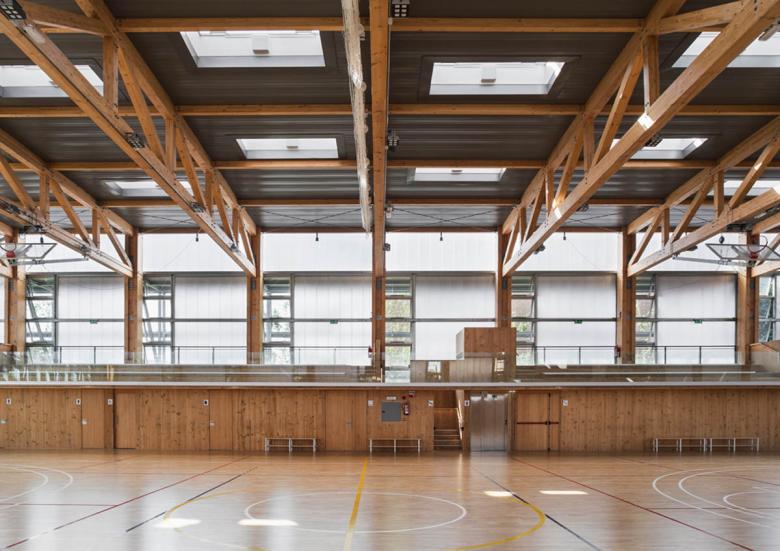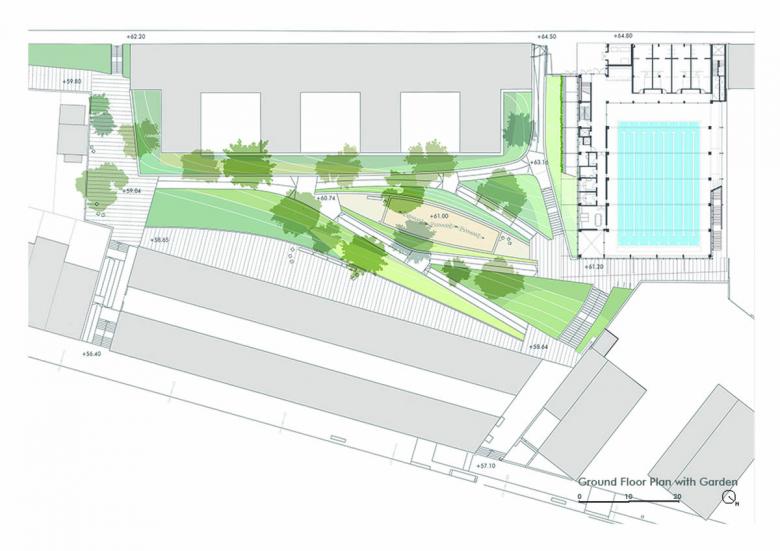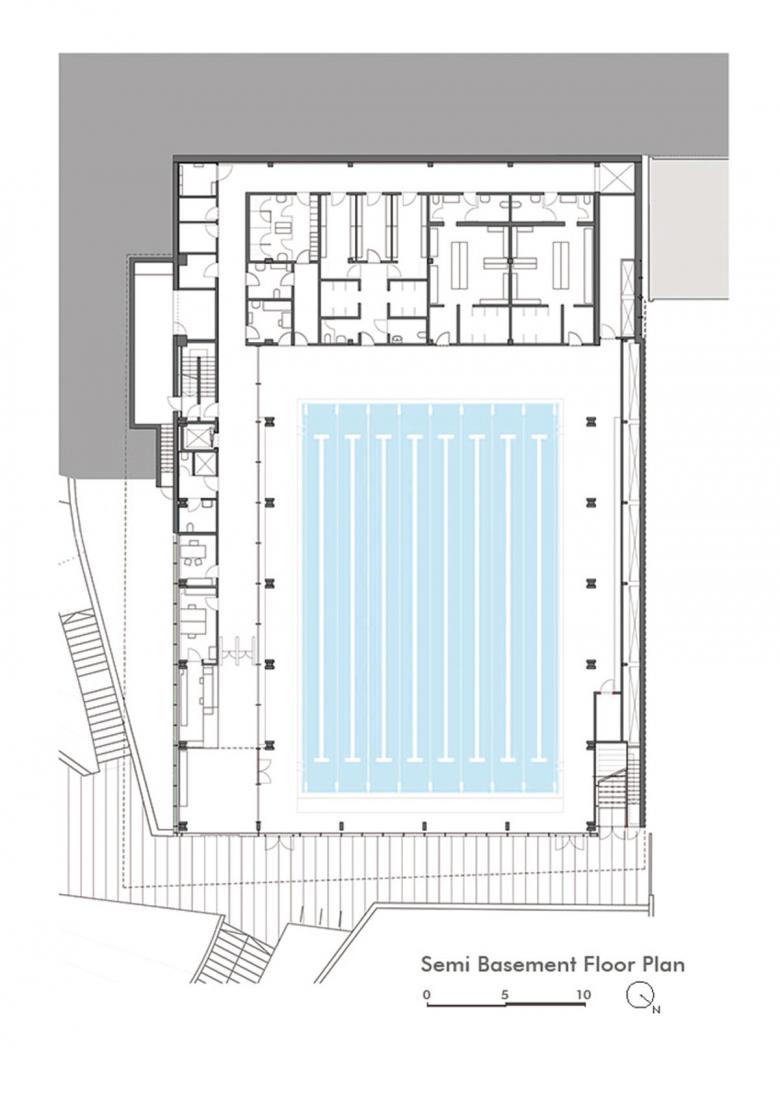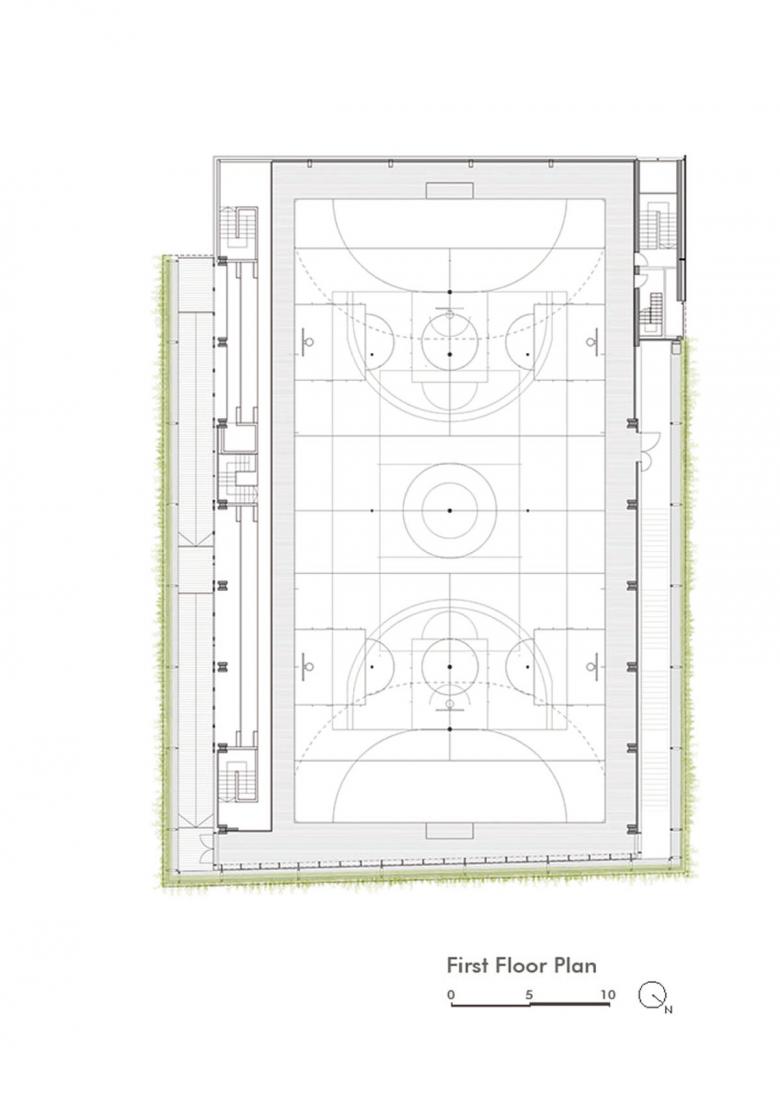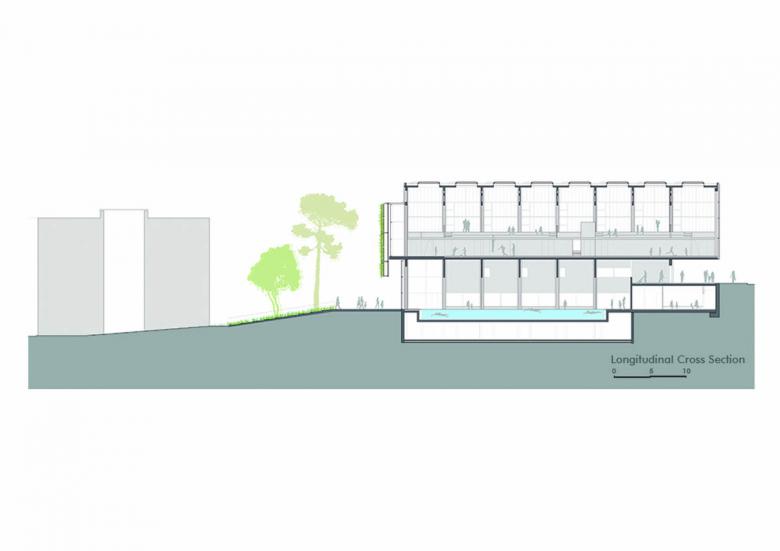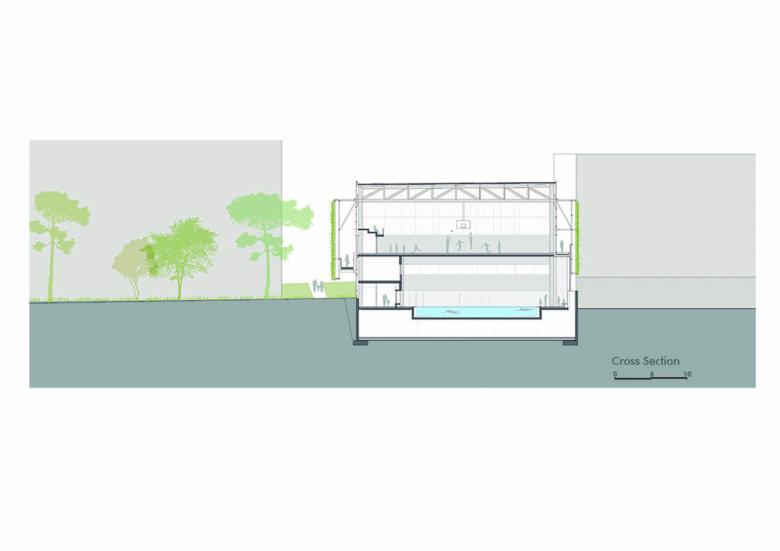Turó de la Peira's Sports Centre and Layout of the Interior Urban Block
Barcelona, Spain
- Architects
- J2J architects
- Location
- Barcelona, Spain
- Year
- 2018
Name of work in English
Turó de la Peira's Sports Centre and Layout of the Interior Urban Block
Name of work in original language
Poliesportiu i ordenació interior d'illa al Turó de la Peira
Placement
Shortlisted
Prize year
2022
Year completed
2018 (Year began 2016)
Authors
Anna Noguera (1961 Spain); Javier Fernández Ponce (1977 Spain)
Collaborators
Technical architect: DÍDAC DALMAU BERNUZ FERNÁNDEZ SLP: MANEL FERNÁNDEZ BERNUZ FERNÁNDEZ SLP): TON COLL Collaborator (office): CARLES RUBIO, JAVIER LÓPEZ, LARA FERRER, MARC BUSQUETS Landscape architect: ANNA ZAHONERO CABA SOSTENIBILITAT: XAVIER SALTÓ PROGETIC: OLIVER STYLE Lighting: SUSAETA ILUMINACIÓN ARDÈVOL CONSULTORS ASSOCIATS: SALVADOR SEGURA
Program
Sport & Leisure
Labels
Sports Centre, Swimming
Total area
5489 m2
Usable floor area
8382 m2
Cost
6.818.839.05 €/m2
Client
BIMSA - Institut Barcelona Esports (IBE) - Ajuntament de Barcelona
Client Type
public
Map
LatLng: (41.433058, 2.1723204)
An integral urban regeneration concentrates two preexisting facilities in a single sports building, to free space and create a large garden that has become a place of social relations. The building is developed with passive architecture criteria and materials of low ecological footprint. The green facade and the use of wood provide a warm atmosphere. The intervention is located at Turó de la Peira, a low-cost social housing neighborhood with a high building concentration. The urban environment prior to the construction was an unstructured space consisting of a sum of residual spaces of hard pavement, a space occupied by a sports court tucked between neighboring buildings and a pool of obsolete facilities. The concentration of the two facilities allowed to free space to create a new garden, a place that provides quality of life and support to biodiversity, and is the preamble to the new facility. The Sports Center consists of two overlapped large spaces; a heated swimming pool on the semi-basement floor and a sports court on the upper floor. The building has an urban facade to the street and minimizes its impact with a green gallery that surrounds it. The volume is one more element of the garden, not mimicking but dialoguing with it. The project had to deal with a degraded and inhospitable environment, in a low-cost social housing neighborhood. The existing pool before the intervention was damaged and the outdoor sports court was too small for competitions and caused noise disturbances to the neighbors. The project's commission as the result of a competition, was to design a very sustainable building, but always taking into account the cost, since it was a public facility. The strategy was a comprehensive operation that regenerated the environment through renaturalization, an environmental regeneration and as a consequence a social improvement. The intervention would turn a grey and inhabitable environment into a green, welcoming and friendly place. The green gallery and the wooden construction are the most remarkable elements. They are natural, with none ecological footprint, and user friendly. The passive architecture criteria construction has achieved a very energy efficient building. The monitoring of the building has verified that the energy costs of maintenance are one third of a building of similar characteristics. The investment made will be recovered in a few years. The excellent characteristics of the wood in relation to its lifecycle, was one of the reasons for choosing the prefabricated system in laminated wood. The entire structure, pillars, girds, slabs and walls were prefabricated in the workshop and assembled on site. It was also assessed its good mechanical performance, its lightness and its short construction time. A green gallery surrounds the building by filtering the light and protecting from solar radiation. The plantation system is hydroponic, chosen for its lightness and water retention capacity. A tank collects rain water for recycling and use for the entire irrigation. The passive architecture solutions are: • Skylights and windows, monitored by sensors for temperature, humidity, co2 and rain, ensuring proper cross-ventilation. • A compact and embedded volume in the ground that minimizes the facade surface avoiding thermal losses. • A thermal insulation of the whole enclosure selectively treated according to solar orientation. • An aero-thermal system that allows the recovery of heat for the production of hot water. • Photovoltaic panels on the roof generating 90% of the energy in the building.
Related Projects
Magazine
-
Building Bridges with Chris Luebkeman
1 day ago
-
Winners of 2024 EU Mies Awards Announced
1 day ago
-
WENG’s Factory / Co-Working Space
5 days ago

